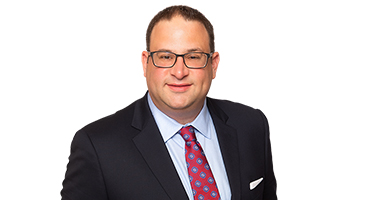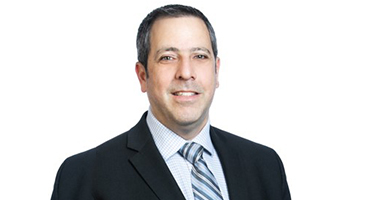M&A activity measured by both private equity and hospital transactions can be a way to assess the strengths of the industry as a whole and provide a base from which to predict the parameters of M&A activity in the rest of 2025. Interest rate hikes and inflation have stagnated deal-making somewhat, but deals continued to be made, sometimes being blocked by government action as in the case with Novant Health’s proposed acquisition of two Community Health Systems hospitals.
Overall, economic signs in the long term are hopeful for the healthcare M&A market. Glenn Barenbaum, Grant Thornton Principal in Healthcare Transaction Advisory, said the new Trump administration's stated priorities could lead to a more lenient regulatory environment for M&A deals, particularly in the not-for-profit hospital sector. This would mark a shift from the previous 18 months, during which the Federal Trade Commission maintained an active oversight of hospital mergers. However, persistent uncertainties such as virtual health legislation and concerns about the effects of tariffs and inflation are affecting the M&A market.
Lance Beder, Grant Thornton Principal in Healthcare Transaction Advisory, said while the M&A market has normalized after the exceptionally high level of deal making seen in 2021-2022, he pointed to an interesting dynamic in the private equity landscape, where firms are facing fundraising challenges due to strong public market performance. Additionally, higher interest rates instituted to fight inflation have created deal-making headwinds. However, Beder highlighted a crucial driver of continued M&A activity — a significant number of portfolio companies acquired and consolidated over the past year now need to pursue transactions themselves.

“The tariffs on Chinese products, in particular, are affecting supply chains of a wide swath of medical supplies, from masks, gowns and gloves to lab equipment and surgical instruments. Investors should reassess the financial situation of target companies dependent on how they are impacted by changes in consumable pricing.”
Scott McGurl, Grant Thornton Head of Healthcare Industry, said it’s important for healthcare investors to understand the impact of the U.S.’s current tariff policy. “The tariffs on Chinese products, in particular, are affecting supply chains of a wide swath of medical supplies, from masks, gowns and gloves to lab equipment and surgical instruments. Investors should reassess the financial situation of target companies dependent on how they are impacted by changes in consumable pricing.”
While there appear to be headwinds on specialty medical groups, healthcare services continue to attract attention of financial sponsors:
- Behavioral health services, including addiction and neurodivergence
- Self-care services such as medical spas, metabolic health and aesthetics services
- HCIT including virtual health and AI-enabled tools across the continuum of care
- In-home therapy and personal assistance services
- Medical staffing
Changing course
Effects of the new administration
“With the assumption that the new administration is pro-business, there’s an expectation that there would be a potential leniency on getting deals done,” Barenbaum said. But there are mixed signals and much uncertainty regarding the administration’s approach to healthcare in the U.S. In February 2025, the Federal Trade Commission and the Justice Department issued statements expressing an intent to keep the existing guidelines (the 2023 Merger Guidelines), therefore wholesale changes may not happen immediately. While a climate of deregulation may seem to bolster healthcare M&A, worries about the impact of the widespread use of tariffs as a trade policy could spark an economic downturn.
However, the skepticism of current vaccines by the Health and Human Services Department Director Robert F. Kennedy Jr. in the administration have worried many in the medical fields. Feedback from within the healthcare ecosystem suggests a possible pivot in healthcare policy approaches — a move away from traditional pharmaceutical-focused healthcare delivery and toward more holistic treatments.
This also could lead to more focus on preventive health through better nutrition, citing recent discussions about revisiting the food pyramid and examining food production practices in the United States. The FDA's recent ban of Red Dye No. 3 could be part of a broader trend toward addressing root causes of health issues rather than just treating symptoms. The connection between food consumption patterns and health outcomes, particularly for conditions like diabetes and heart disease, was highlighted as an area likely to receive increased attention, which could indicate more deals for companies that focus wellness.
However, the administration’s enacted and proposed cuts to the National Institute of Health, the Centers for Disease Control and Prevention, and freezes on research grants to various U.S. universities are having immediate effects on the research being done at these institutions. McGurl said these effects would necessarily include jeopardizing the various private entity partnerships with those agencies and institutions, and medical research in general in the U.S.
Focus on patient empowerment
These likely changes in emphasis in the way healthcare and associated treatment is provided from the new administration could guide the focus of private equity investment to more closely embrace overall wellness and healthcare consumerism trends. McGurl said there is significant private equity interest particularly in the consolidation of medical spa and aesthetic businesses, addiction treatment, in-home care, adolescent autism services, traditional outpatient psychiatric and behavioral healthcare.
McGurl further added there is a high probability these moves will lead to a marked increase in structured relationships between private equity and healthcare systems as they focus on managing operating margin across facilities and service lines.
The tie to all these factors, Beder said, was a shift toward metabolic health approaches, marking a departure from traditional drug-based treatment and a transition to self-health. This emphasis change could be viewed as a challenge to traditional healthcare delivery: the misalignment between patient needs and provider availability. This disconnection has historically limited the ability of patients in the U.S. to access care when most needed.
In alignment with this push to more accessibility, there is a growing intersection of consumer technology and healthcare services through devices like the Apple Watch, the Whoop, the Oura Ring and other wearables as well as remote patient monitoring technology. Modern healthcare tools such as these are increasingly enabling consumers and providers to actively track patient vital signs and empowering the patient to make informed decisions about their care delivery preferences, and consumer interest in these products and service platforms are expected to continue to gain interest in 2025. McGurl added that we expect a mid-range convergence of data between wearables with medical records to improve prevention, access, and recovery.
These developments point to an evolution in healthcare technology's role, with the focus shifting from provider-centric to patient-centric solutions. Consumer transparency and control represent a significant change from the traditional model where patients relied solely on medical professionals for health insights. McGurl expects healthcare sector startups focused on patient-centric products, services, and related health-technology to attract significant investor interest for the balance of 2025 and beyond.
Virtual health expansion and restrictions
The dramatic upsurge in the use of virtual health has made virtual health companies a common target for M&A interest. However, Barenbaum said uncertainty regarding virtual health regulation extensions was currently tamping down market activity, though the uncertainty has not slowed deals. Iris Telehealth’s acquisition of InnovaTel, announced Jan. 21, makes Iris one of the largest virtual health telepsychiatry providers in the U.S. The move underscores the impact of virtual health consolidation in the behavioral health sector, where it plays a significant role in cost reduction and patient experience enhancement.
Medicare extended telehealth services through Sept. 30, 2025, while noting that Federally Qualified Health Centers and Rural Health Clinics can continue to provide services virtually through Jan. 1, 2026. Virtual health has its limitations, but in the area of rural care and behavior health, particularly as a first-line treatment aid, virtual care will likely remain a viable valuable treatment option.
“I believe some level of virtual healthcare delivery options will remain available,” Beder said, “traditional telemedicine visits may decline in volume, but new variants of virtual healthcare delivery such as the virtual nurse or remote patient monitoring will likely grow and reduce certain in person nurse interactions and patient visits to providers.”
M&A outlooks for other key industries
Other considerations
Interest flagging in value-based care
The transition from a fee-for-service to value-based care (VBC) model has been increasingly popular with providers. But the outlook for investment in VBC remains challenged as VBC models have faced rising profitability challenges in recent years. “It’s a consequence of providers taking on too much risk and due to excessive risk-taking associated with unexpected rising utilization without corresponding risk sharing, or appropriate stop loss management,” Beder said.
Barenbaum agreed that VBC in general will unlikely be a prime target of investment in 2025, but he added that the healthcare sector remains committed to VBC principles, given its importance in creating a more efficient U.S. healthcare system through shared benefits and cost-effective outcomes. He said he is seeing start-ups specializing in VBC for specific therapeutic areas such as cardiology and podiatry, while noting primary care's relative maturity in this space. In addition, technology-based solutions that are designed to evaluate the traditional FFS ecosystem to VBC environment are emerging.
Beyond these trends, financial investors continue to strategically target unconsolidated sectors, moving beyond the largely consolidated specialty medical groups. Overall, larger healthcare groups seemed to be seeking synergies and efficiencies, looking to acquire provider groups and plans allowing expected financial benefits of VBC to become more tenable.
Preparing for a transaction
In light of these trends, it’s clear that healthcare companies need to be prepared for the possibility of not only financial but extensive technology and workforce diligence. Additionally, new or disruptive technology and AI in particular, should be evaluated for its ability to scale the business and potential impact to M&A preparedness. Both Beder and Barenbaum said that evaluating a company’s technology ahead of a process should be concentrated on three critical areas of focus:
- Assessing a company's current technological state
- Understanding a company’s future technology investment plans and its impact to operations and scalability
- Evaluating cybersecurity measures, which is particularly crucial in healthcare organizations
Effective due diligence should incorporate integration planning from the outset, noting that companies with rigorous integration protocols typically generate higher transaction value.
Related resources
Conclusion
Healthcare companies need to be closely monitoring regulatory changes, the competitive landscape and implementing operational and digital transformation strategies to enhance patient care, improve outcomes, address labor shortages and reduce costs. With such significant and varied priorities we see the sector primed with opportunity, continued growth and potential consolidation and partnership opportunities.
Undertaking M&A can be daunting for healthcare organizations, given the multifaceted nature of evaluating healthcare investing, where technological capabilities, financial reporting sophistication, and market positioning must be weighed against evolving industry dynamics and exit opportunities. Often, the use of a third-party firm with extensive healthcare experience like Grant Thornton who offer a vast suite of targeted solutions is key to the success of a transaction.
Contacts:



Head of Healthcare Industry
Grant Thornton Advisors LLC
Principal, Business Consulting Services
Scott McGurl is the head of the Healthcare industry and a Business Consulting Principal based in the Tampa office.
Tampa, Florida
Industries
- Healthcare
- Life Sciences

Partner, Transaction Advisory Services, Diligence Healthcare
Grant Thornton Advisors LLC

Partner, Transaction Advisory Services, Diligence Healthcare
Grant Thornton Advisors LLC



Content disclaimer
This Grant Thornton Advisors LLC content provides information and comments on current issues and developments. It is not a comprehensive analysis of the subject matter covered. It is not, and should not be construed as, accounting, legal, tax, or professional advice provided by Grant Thornton Advisors LLC. All relevant facts and circumstances, including the pertinent authoritative literature, need to be considered to arrive at conclusions that comply with matters addressed in this content.
Grant Thornton Advisors LLC and its subsidiary entities are not licensed CPA firms.
For additional information on topics covered in this content, contact a Grant Thornton Advisors LLC professional.
M&A outlooks for other key industries
Trending topics

No Results Found. Please search again using different keywords and/or filters.


Share with your network
Share